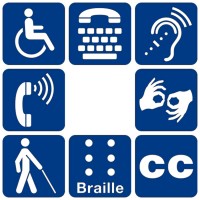Widgetized Section
Go to Admin » Appearance » Widgets » and move Gabfire Widget: Social into that MastheadOverlay zone
From Facilities to Homes: The Rise in Individualized Funding and Consumer-Controlled Budgets
By Julie Ann Racino
Principal & President
Community & Policy Studies
Over the years, there has been a slow shift in how financing is appropriated for personal disability services. As early as 1990, the International Personal Assistance Symposium, held in Berkeley, CA called for the development of individualized financing in the United States and worldwide (World Institute on Disability, 1990; Snow & Racino, 1990). Canadians had proposed a service brokerage model (Salisbury, Dickey and Crawford, Allan G. Roeher Institute, 1987). Direct payments for personal assistance services were the focus of independent living leadership (Racino, 2006) and the US already supported cash subsidies in a limited form to families with a child with a disability (Taylor et al, 1989; Agosta, 1989).
In the US, the concept of individualized funding© was identified as a key component in the process of individual assessment, planning and funding services in the first introduction of the community support worker “in severe disabilities” (Racino, 1990, p.207). A study of 40 leading national sites supporting people with disabilities (selection of case studies in Taylor, Bogdan & Racino, 1991 and Racino et al, 1993), found that in regards to financing “what was unique about many organizations was their willingness to seek out ways to modify, combine or develop funding to meet the needs of individuals” (Racino, 1991, p.56).
In the United Kingdom, during my 1990 visit, Margaret Flynn of the National Development Team noted that “starting from the premise that everyone belongs in the community, money should follow people.”
In Nebraska and Arizona, Lyn Rucker has ensured that money has been reallocated to integrated settings” (Flynn, 1990; Towell, Racino, & Rucker, 1990). The King’s Fund College, meeting with the Canadian Association of Community Living, stated: “When families have individual funding from the government for their children with learning difficulties, they mostly do not buy special services, they want ordinary things.” (Towell & Flynn, 1990). [Racino, 2013, p.13]
Systemically, in the US, the most widely reported initiatives for federal financing reform involved federal and national foundation demonstrations such as:
- Community Supported Living Arrangements (CSLA) (e.g., Brown, Lakin & Burwell, 1997);
- Money Follows the Person (e.g., Kirchener & Moseley, 2007);
- Cash and Counseling (e.g., Simon-Rusinowitz et al, 2005);
- Medicaid Personal Care Services (e.g., Doty, Kasper and Litvak, 1996);
- Real Choice Systems Change (e.g., National Council on Disability, 2005); Independence Plus Initiative (USDHHS, 2003);
- Individual Development Career Accounts (Cloutier, et al, 2006) among others.
In 2010, consumer-controlled budgets were also a new initiative in the US with 75 percent of 43 states reporting individual budgeting options (Moseley, Gettings, & Cooper, 2010; Stancliffe & Lakin, 2005). By the mid-2000s, the Centers for Medicare and Medicaid reported on the authorizations for user-directed services and its use in health care financing (e.g., Centers for Medicare and Medicaid, 2011). Budgets to pay for massage therapy, tuition and books, fitness expenses, debit card fees, assessments, and individual therapy/psychiatrist were reported in the field of mental health (Cook et al, 2010).
By the year 2000, the First International Individualized Funding and Self-Determination Conference was held in Seattle, WA, and the Internet hosted sites worldwide on the topic. For example, the European Network on Independent Living, the Center on Human Policy, Syracuse University, Instituto Universitario de integracion en la Communidad in Spain, the Australian Society for the Study of Intellectual Disabilities, Community Living Society of Canada and the Hester Adrian Research Centre in the United Kingdom.
By 2011, the National Personal Budget Survey in the United Kingdom (Hatton & Water, 2011) reported that the fundamentals of personal budgets were in place. In 2003, Canadian colleagues John Lord and Peggy Hutchinson highlighted projects in Canada, USA and Australia. In 2009, individual budgets were being associated with tiered systems of intensity of support (Agosta et al, 2009). Other nation-states, including Australia, have implemented individualized funding on the basis of small amounts of funding (e.g., Rillotta, et al, 2012) on family quality of life.
Reviews and work are still needed, especially in expansion to different disability groups (e.g., traumatic brain injury) with individualized and consumer-controlled budgeting, a relative of public administration’s participatory budgeting worldwide. These developments are aligned with major reforms necessary in housing and support for adults with disabilities, children residential services, support to families especially early parent-founded respite services, and support for community participation and employment as “long-term services and supports” (LTTS) in the community (Racino, 2012, forthcoming, 2013).
———————————————————————————————————————————————————
A complete list of references are available at: facebook.com/communityandpolicystudies
Excerpted from: Racino, J. (2012, forthcoming, 2013). Public and individual budgeting/financing. Public administration and disability: community services administration in the US.. NY, NY: Francis and Taylor, CRC Press.



Julie Ann Racino
March 5, 2021 at 4:05 pm
The Rise in Health Care Financing was presented at ASPA Chicago by Julie Ann Racino in March 2015, and the Chapter on Individual and Public Budgeting (US Presidential and federal initiatives included) was published in 2014 at http://www.crcpress.com/authors
Julie Ann Racino, ASPA, Budget and Finance, 2018
Marlene
April 7, 2016 at 3:15 pm
Thanks for posting such an informative article.
Pingback: Community & Disability: DeInstitutionalization | PA TIMES Online